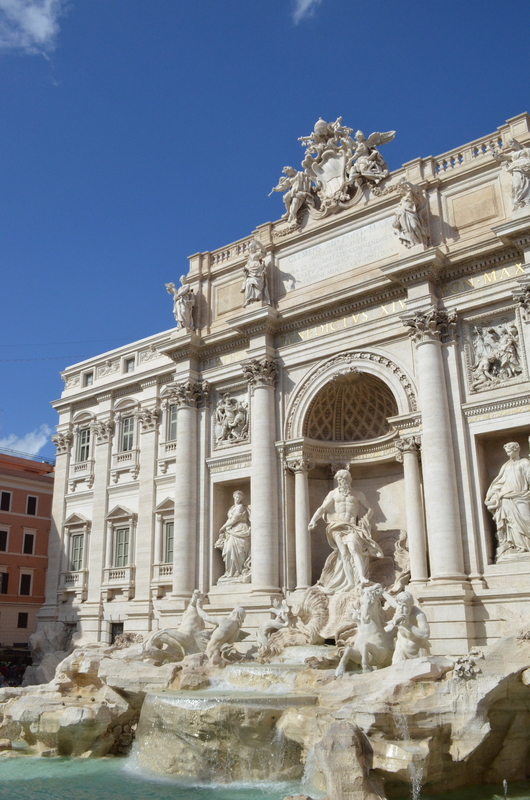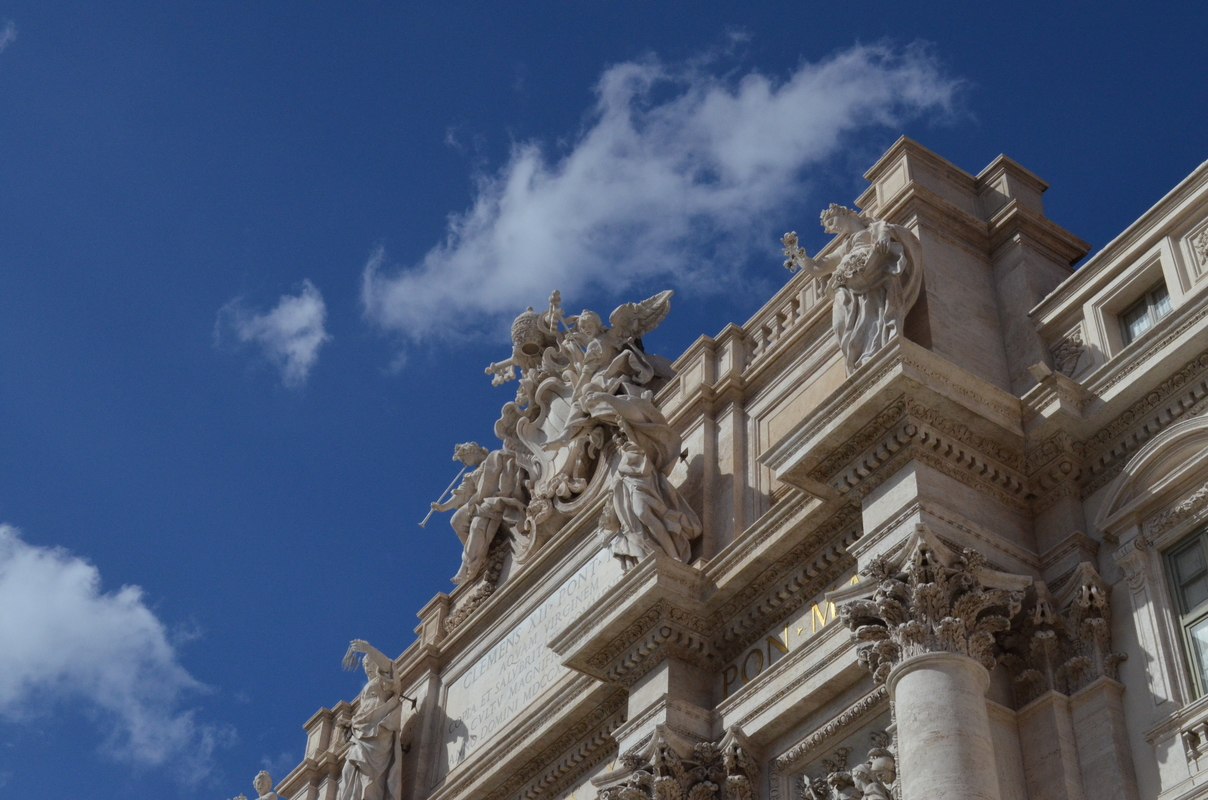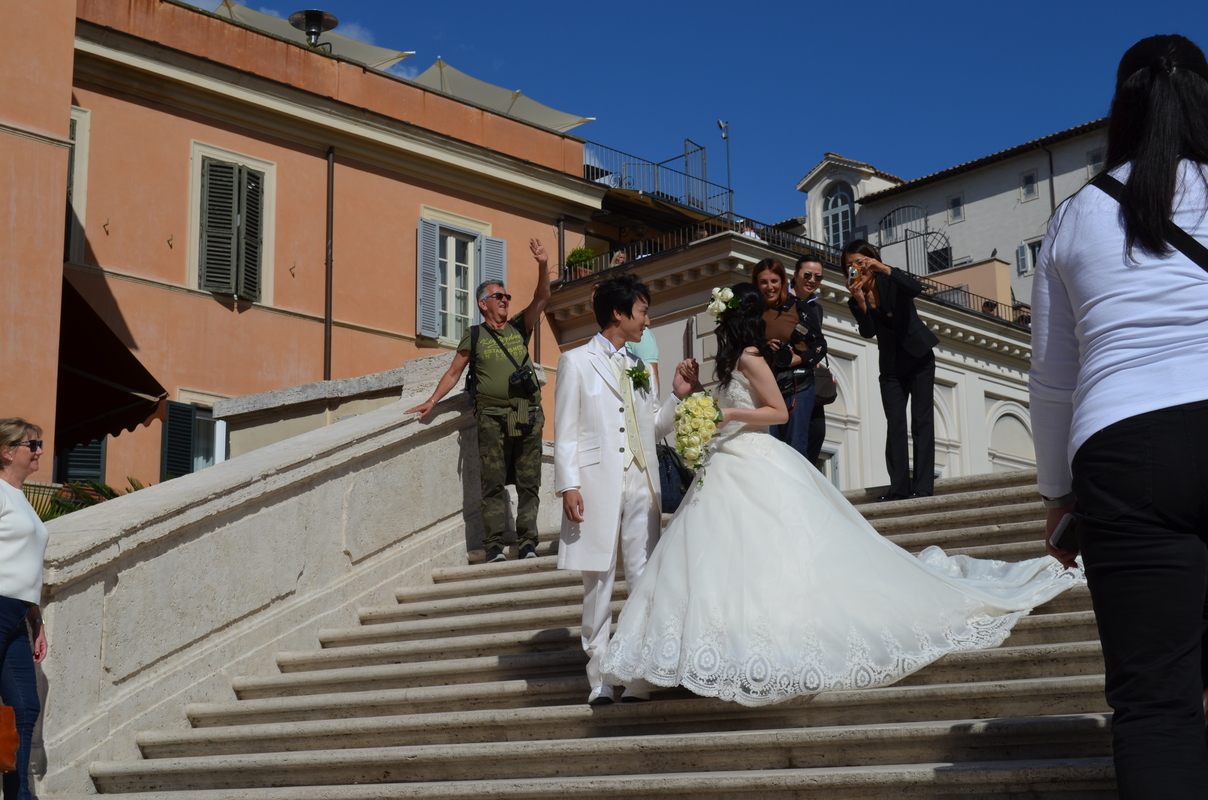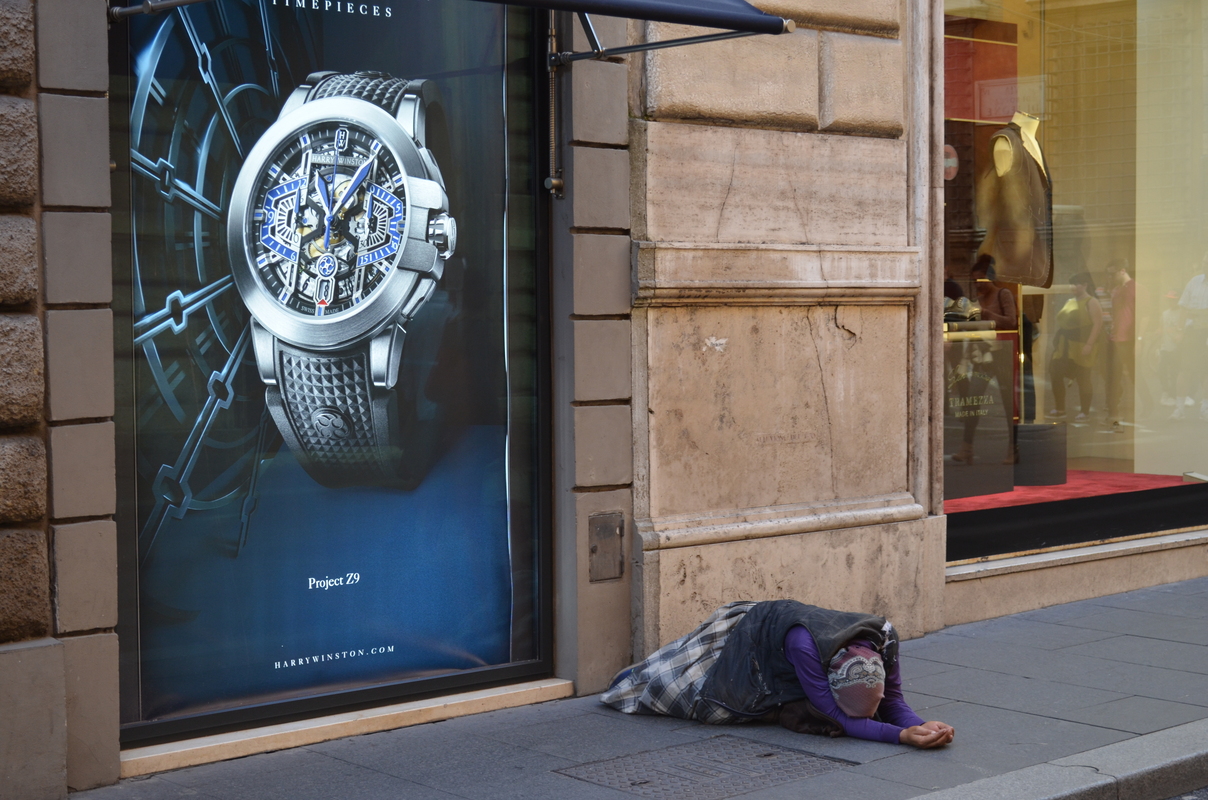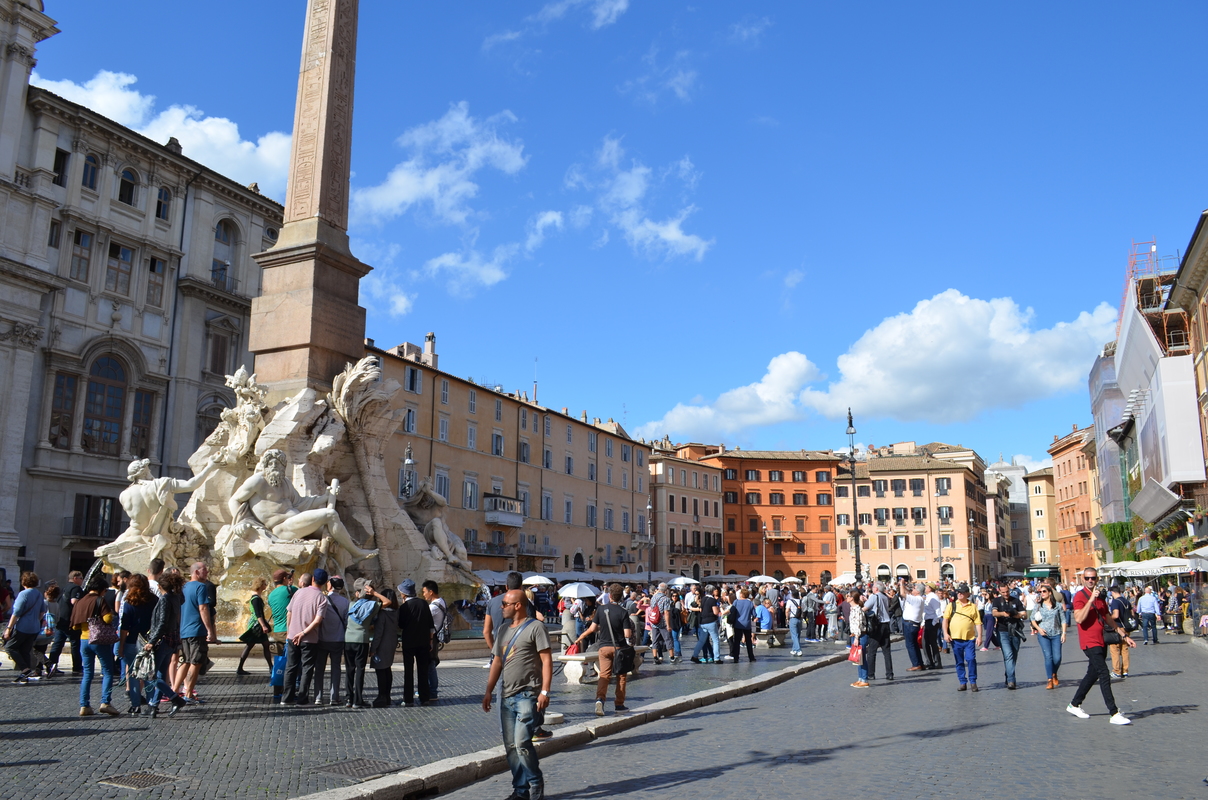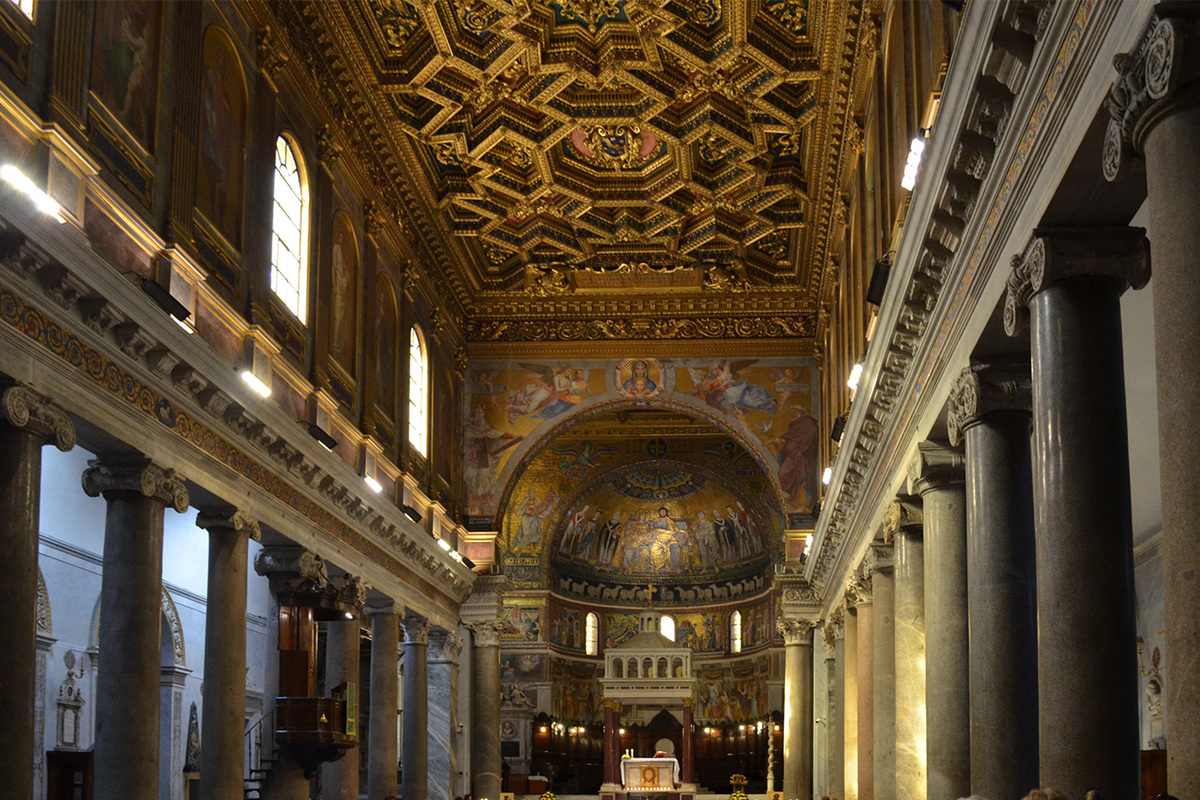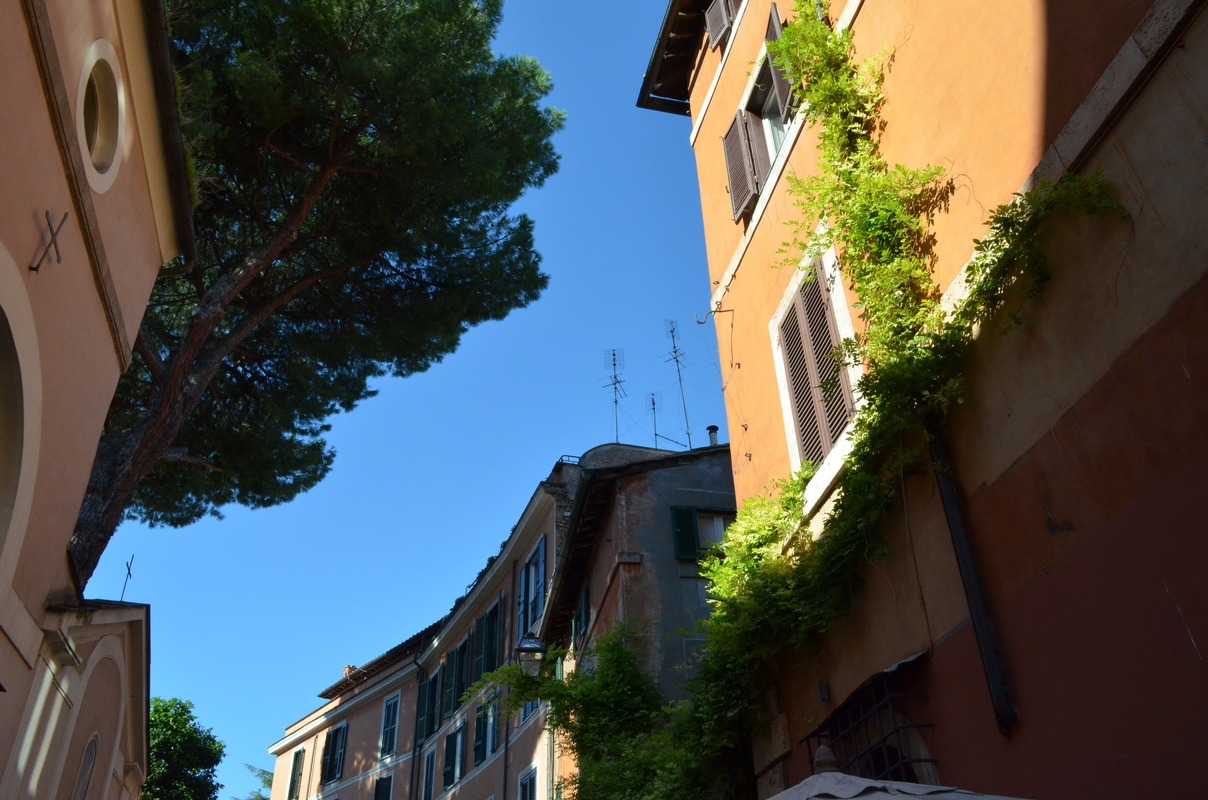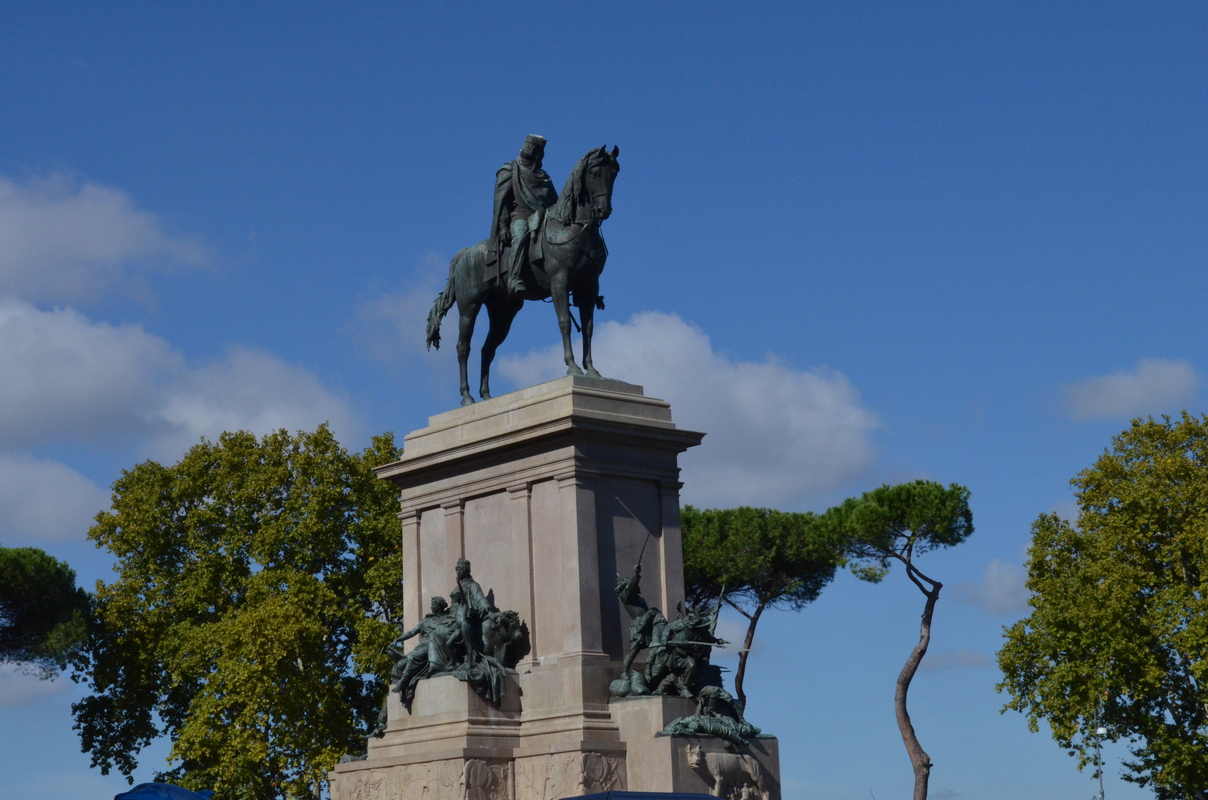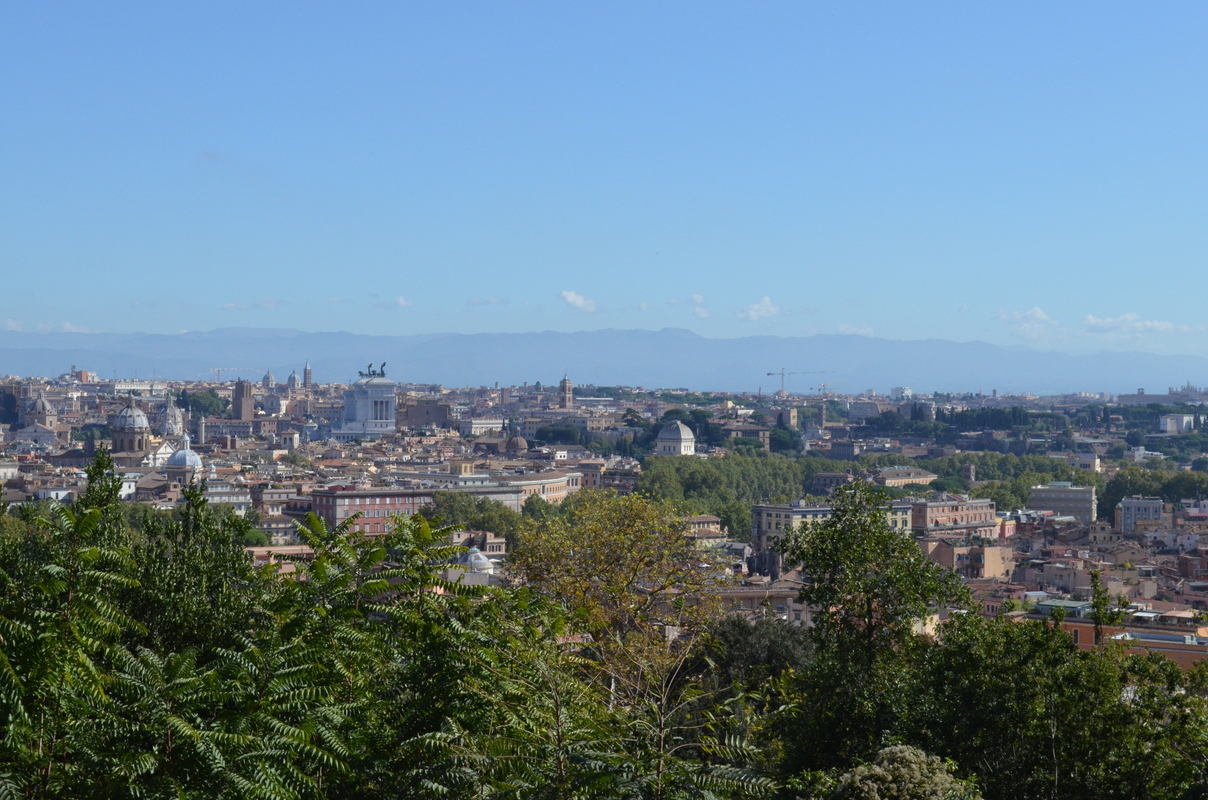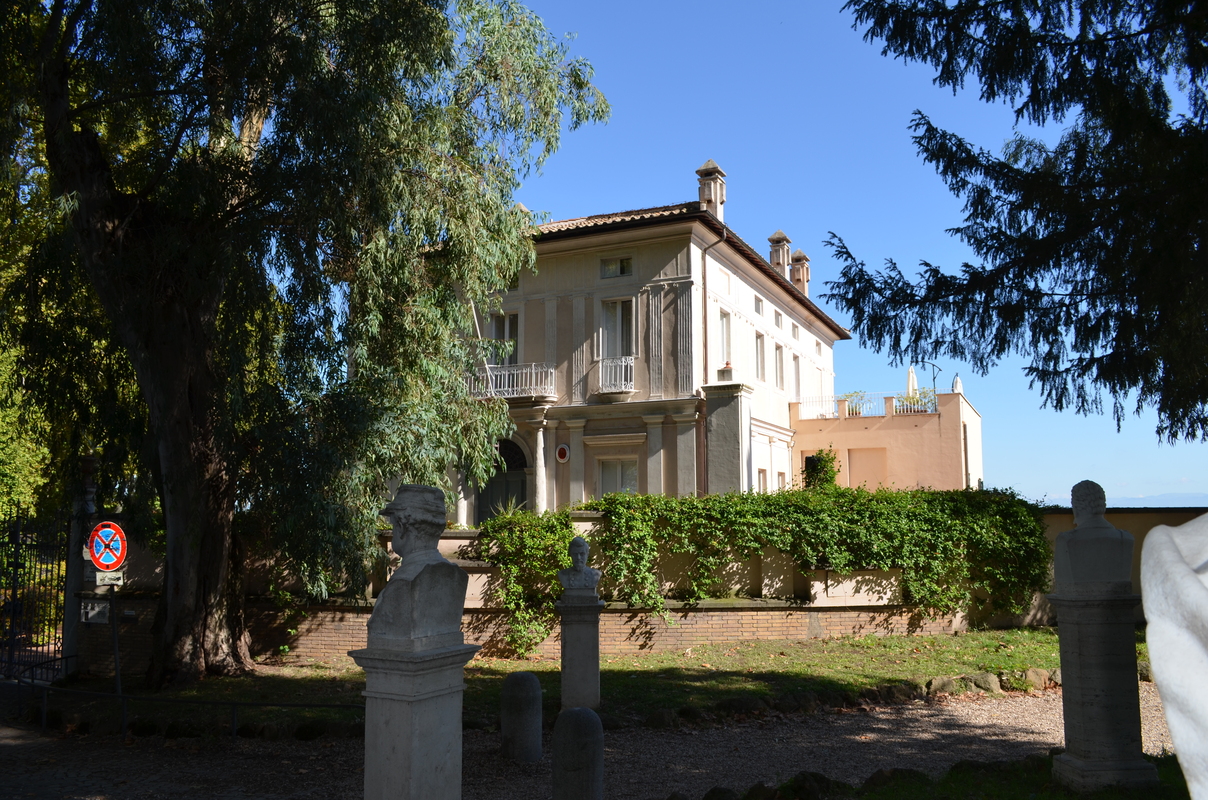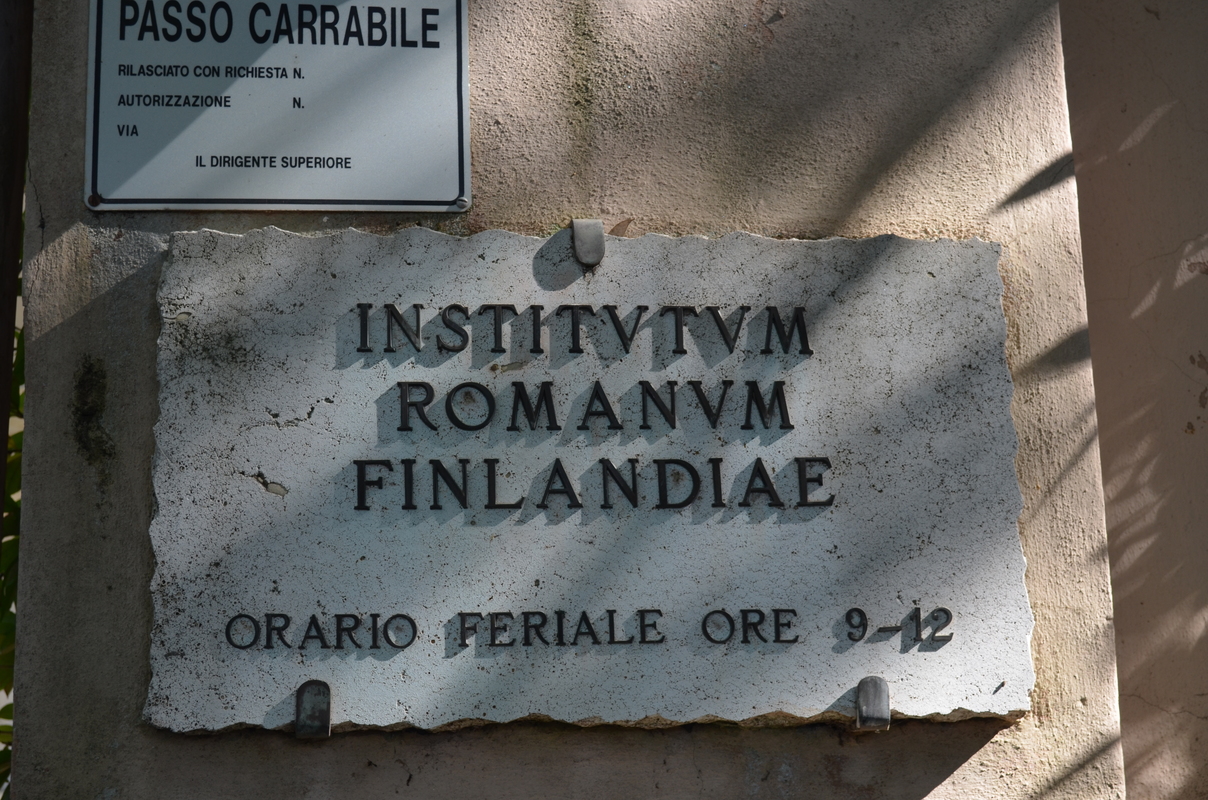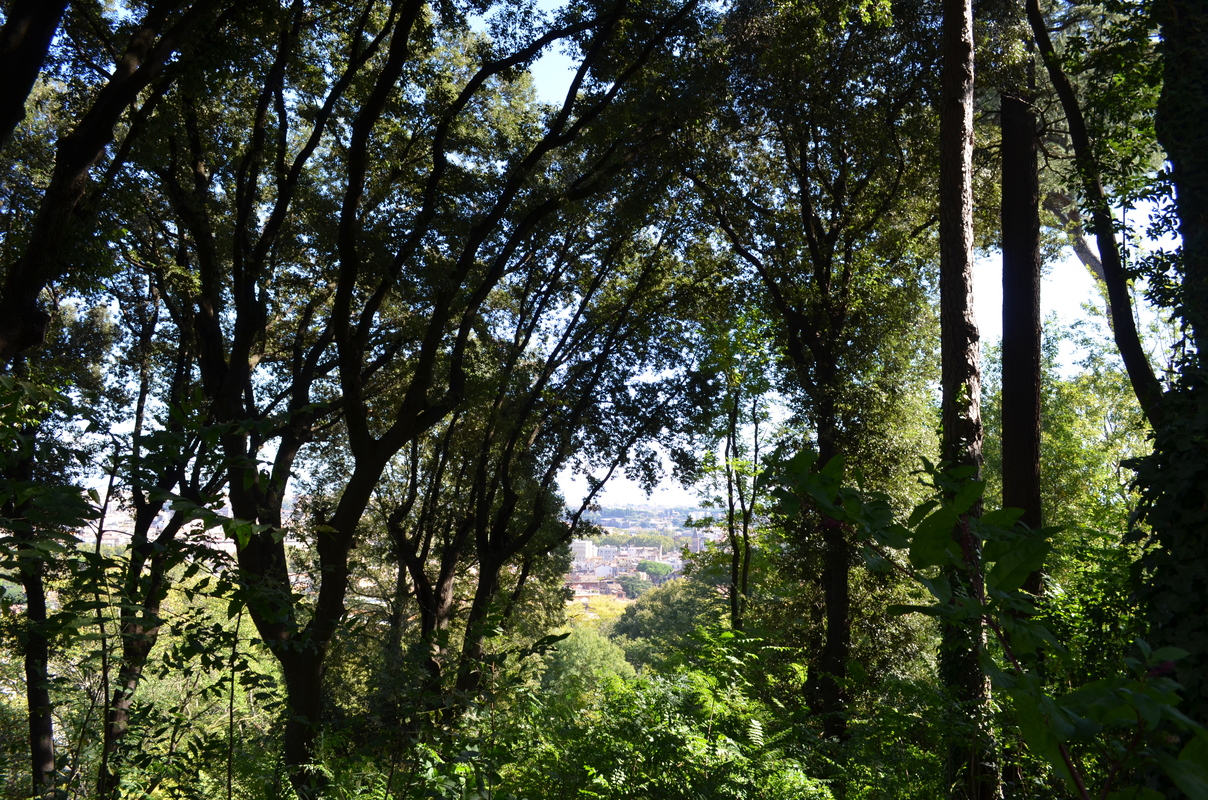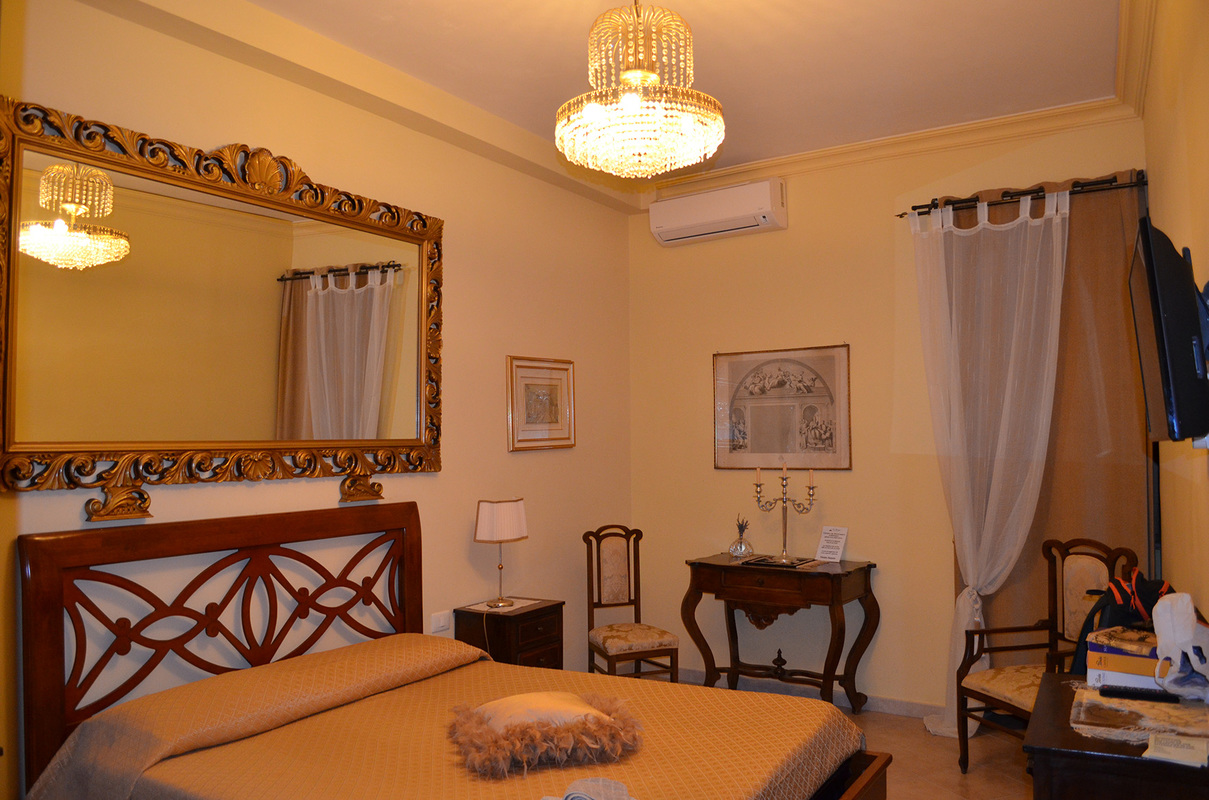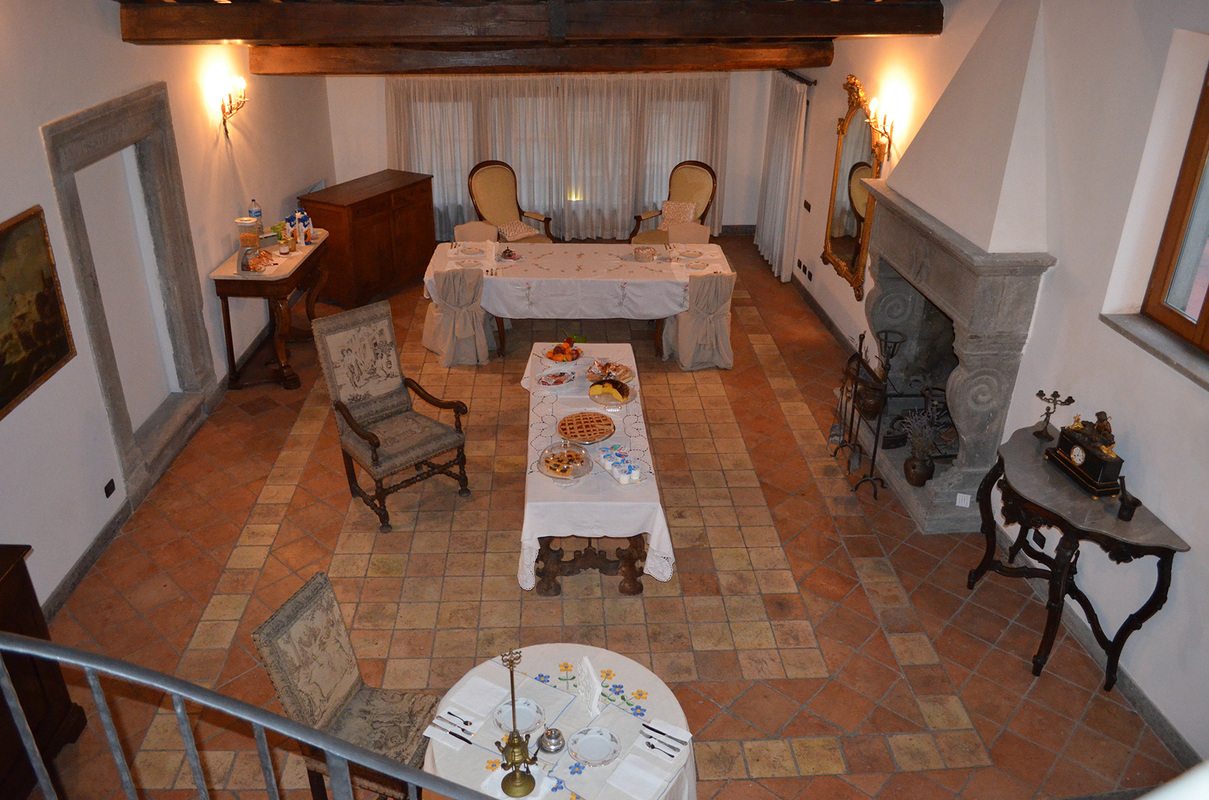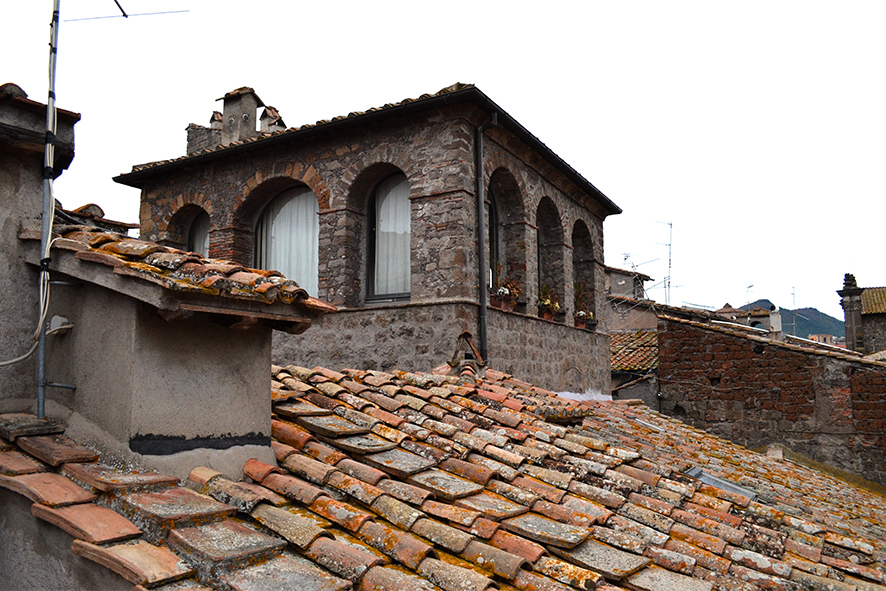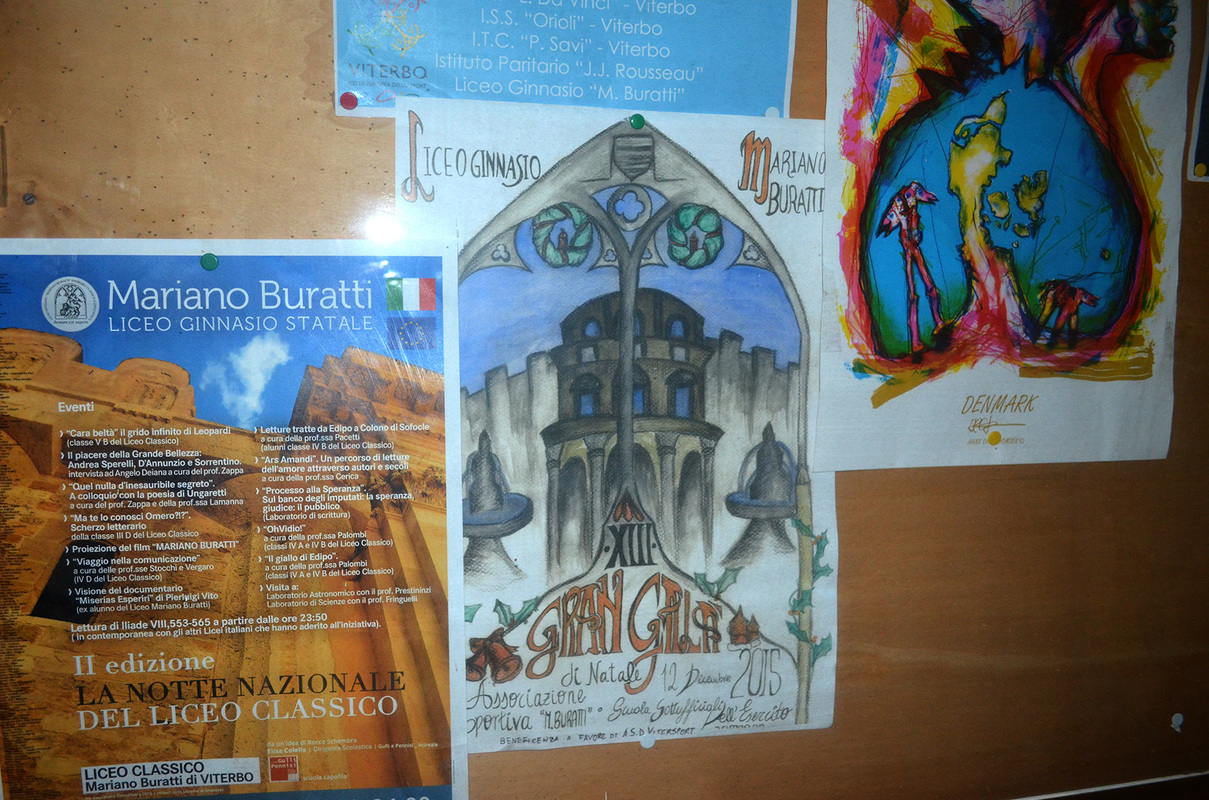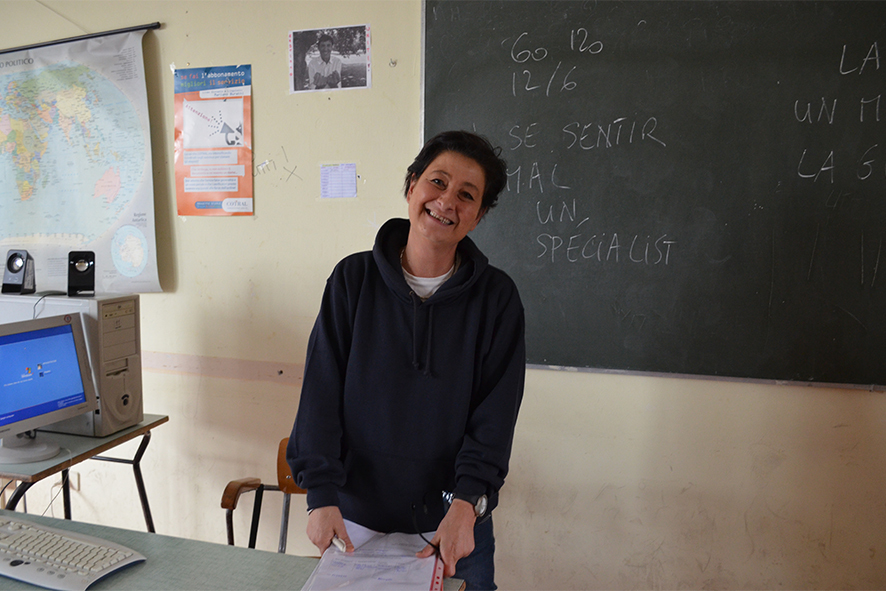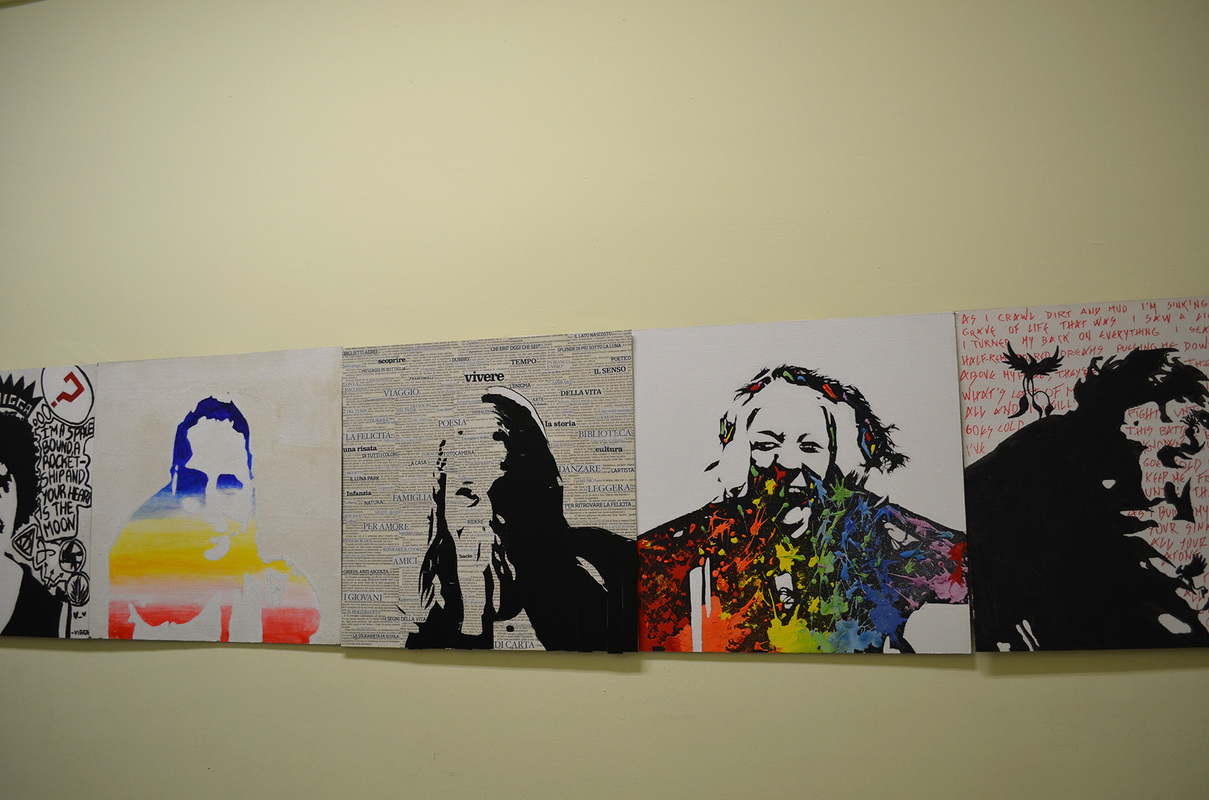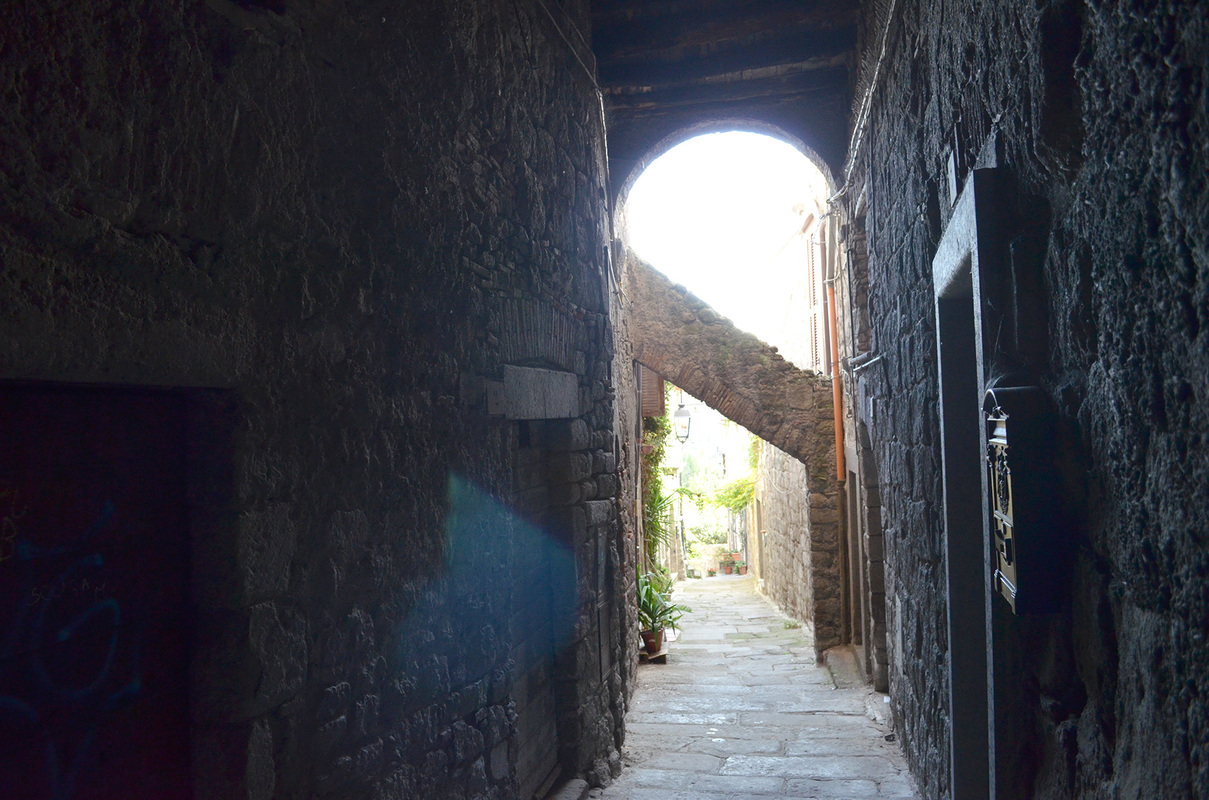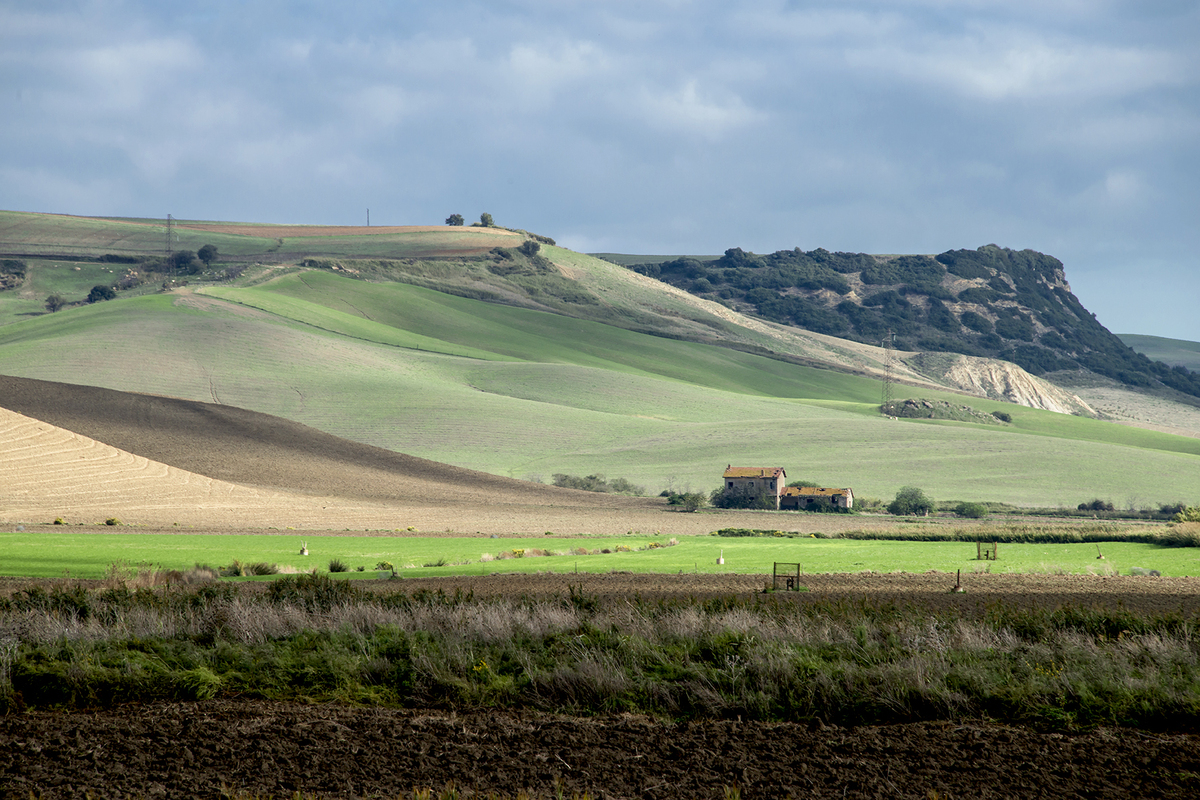Taina´s Job Shadow in Italy in October 2016
Taina´s Job Shadow in Italy in October 2016
Via Roma 14.-16.10.2016
I travelled to Rome two days before my departure to Viterbo to see some remarkable sights in the old city of Rome.
Fortunately many of them are located very near to each other, so I had with my little group time to visit e.g. in Victoria Emmanuels memorial, Forum Romanum, Trajan´s Column, Colosseo, Spanisch Steps, Fontana di Trevi, Panteheon, Piazza Navona and Palazzo Farnese – nowadays a museum - and to relax having a lunch in a street restaurant.
On Sunday we headed to Trastevere and Janiculum hill near San Pietro and Vatican City, from where opened huge view high towards the city center. On Janiculum hill there is also Gioseppi Garibaldis equestrian statue, and Finnish Institute in Rome, donated by Amos Andersson renessaince villa, Villa Lante. In Santa Maria in Trastevere, we stopped in medieval Basilica Mass time. Streets were full of different kinds of events; jazzconcert, soap bubble blowers, people sitting out in cafes and tavernas, selling jewelries etc. After that I stayed at a street taverna for pizza. I felt like I were back in summer, 22 degrees of heat in October. - It was already time to look for the next connection to Viterbo by train.
Viterbo is an ancient city and commune in the Lazio region of central Italy. The historic center is surrounded by medieval walls, which are still intact, built during the 11th and 12th centuries. Entrance to city is through ancient gates. Nowadays Viterbo county is one of the Italian provinces, and Viterbo city is the provincial capital with over 65 000 inhabitants.
Lyceum Mariano Buratti, ”Ginnasio Liceo Statale, indirizzo e Linguistico Clasico” was chosen for my job shad
ow perhaps because the italian language and literature -teacher Stefania and english teacher Tiziana were job shadowing in Finland and Joutsa last autumn - and I have always been interested in Italian culture.
I arrived to Viterbo Porta Romana station at dusk. Stefania was waiting for me with her friend. In the evening they showed me my Job Shadow school and we brought my luggage to B & B - La Fontaine, which is located right in the old heart of the city and only about six minutes from the Classical Lyceum.
La Fontaine has four stories, a fine old house, whose sole occupant I was at least in the beginning of the week. We did also an walking tour in a historic quarter in the center; renaissance and baroque, Piazza S. Lorenzo and Palazzo Papale and San Pellegrinos Piazza and medieval streets. – From them I will come to take photos later in daylight ...
17.10. The first day was exciting!
Breakfast table setting in La Fontaine was quite big - fruits, yoghurts, cakes, toasts, and a variety of coffee options. It´ was a pity, because I had to eat quickly, since the school began at eight.
The first day was, of course, exciting - fortunately I met Stefania in corridor and she gave me a school timetable.
A 1400 student lyceum has more than 100 teachers. There are also janitors in the corridors who guided students and teachers into the appropriate classes. They also brought messages for teachers. I didn´t see any cell phones during in the lessons in class, with only a couple of exceptions, which I found a good thing.
Mariano Burattis students told me that the Italian elementary school consists of two phases of three years, after which the high school students will continue their studies five years. 1th to 2nd classes, students have 27 hours per week, 3rd to 5th classes have 31 hours a week. Saturdays are school days.
My Mentor was Professor Vittorio, architect and art historian. His students had an oral exam, which indeed left a lasting impression on me. Even though I did not understand much Italian, only one word here and there, but the students' preoccupation and discussion with the teacher conveyed nicely. Everyone was well prepared for the examination, discussion could sometimes take a long time – about different themes; e.g. Greek antiquity, the Parthenon temple ground plan, architecture and ancient sculpture.
I followed the 3rd, 4th and 5th classes lessons of art history, Storia dell' Arte. As the lessons are held together - school ends usually at 14 o'clock at the latest.
I discussed with my mentor-professor about high school course programs. They are agreed at the individual school level; in Mariano Burattis classical lyceum there are six courses of art history for everyone, it includes compulsory studies, two hours in the 3rd, 4th and 5th grades. The workshop studies are optionas. Making art takes place in separate workshops, which were now starting in November. (Vittorio told me that high school is a five-year. Different subjects can participate in the final in service testing only once, and final exams cannot be compared to Finnish matriculation examination.)
We agreed to meet with Stefania for city tour in the evening. History teacher Angelo came with us to the town hall to admire the amazing medieval stanzas and wall paintings. – It was like return to the past! In a city hall, we met the mayor of Viterbo.
Outside, we continued to research the ruins of Etruscan sarcophagus and pictures of ”Macchina of Saint Rosa” -parades and continuing the journey to the Etruscan museo, which was closed. Handmade pasta of Taverna Etruscan with cream-lemon sauce topped off the evening.


18.10. Study and examinations
On Tuesday, I listened to Stefanias Italian language and literature lessons in Orlando Furioso and Vittorios lessons, art history ( - the notion of classicism and its systems, as well as with the second group of the French Romantic period painting.) Students had great art history books La Storia dell' Arte (Carlo Bertelli), which together work just fine with the images provided by the teacher's computer. In addition, I followed Tizianas English course.
Stefania organized Question Time by students - they wanted to know about Finnish education system, writings, teaching materials and art teaching in Finland. I told about the new curriculum reform and the upcoming abitti experiments. In Italy there are no matriculation exams, students take tests in normal subjects of the department, and they can take them only once.
Stefania introduced me to the Mrs. prof.ssa Clara V. She told me that she wished that their lyceum would be able to cooperate with Finnish schools, because they had heard so much good about the school systems - but now they had already started cooperation with some schools in other countries. At the same time I got to see the main building of the Lyceum (built in 1930s).
On Tuesday afternoon, I roamed around the city of culture, Viterbo; studied S. Rosa's Basilica and the patron saint of S. Rosa at a distance. ”La Macchina di Santa Rosa di Viterbo” is listed as UNESCO intangible Cultural Heritage. Then I went again to the Basilica of S. Lorenzo, the Palace of the Popes, and later to S. Maria Nuovo. Viterbo has been a major tourist destination because the popes conclave convened there for the first time. It has been well located stagingpost for travelers on their pilgrimage to Rome. The river flowing through Viterbo has disappeared from sight, because it was filled with rubble from the bombed buildings in fascist period.
I continued my trip in bookstores and other shops and was looking for casual dining options a bit too early before the opening of taverns.


19.10. Cultural History in Viterbo
The morning was cold but sunny!
The 5th class discussed the Romantic era and Italien Antonio Canovas neoclassical marble sculptures. The 3rd class students discussed loudly before their lessons of duplication of tests. In art history the class talked about classical cultural manifestations in art, human characters proportion of Polykleistos, movement discription in Discobolos and contraposto impressions of the sculptures. 4th classes lessons continued in subject of perspective, distance and space, as well as picture of Brunelleschi; the group in Verroccion painting of San Christoforo and paintings of Mantegna.
The last hour was Tizianas 3rd classes English, and they discussed various areas of study as well the use of the verbs make / do.
The lessons which I attended, had in most cases 17 to 25 students, of which one third / one fifth boys.
Students have their own classroom, and teachers circulate in classrooms. Classrooms were relatively small, but their acoustic works well, and that enabled a lot of good discussion between teachers and students. Only two classes are large, the other is a computer lab.
At the end of the school day, the school often emptied quickly. Teachers do not have their own workspaces in school building, only a small teachers' room in the new school, but in the older administrative building they are much larger. The porters bring messages to the classes. They may appear to the class to report something important, or bring a letter or message to someone.
Students live in Viterbo or in the surroundings, somebody 50 km away. During the breaks snacks were sold to the students - large box of foccazzos and rolls and drinks to eat. During the lessons no one ate in the classes, and only some bottles of water appeared on the desks. Also, cell phones or headsets are not used in the lessons! Great! In anyway, I admired especially astonishing students, for their kindness, good behavior, concentration on class work and active participation in the discussion related to education.
At the end of schoolday I continued to adventure in the city. I found after searching Taverna Etrusco to have wonderful pasta and pistaccio-cheese cake for lunch. Then I asked the way (just off La Fontaine close angles) to photograph the medieval district of San Pellegrino, renaissance and baroque, and all historical periods which live up in Viterbos urban culture.


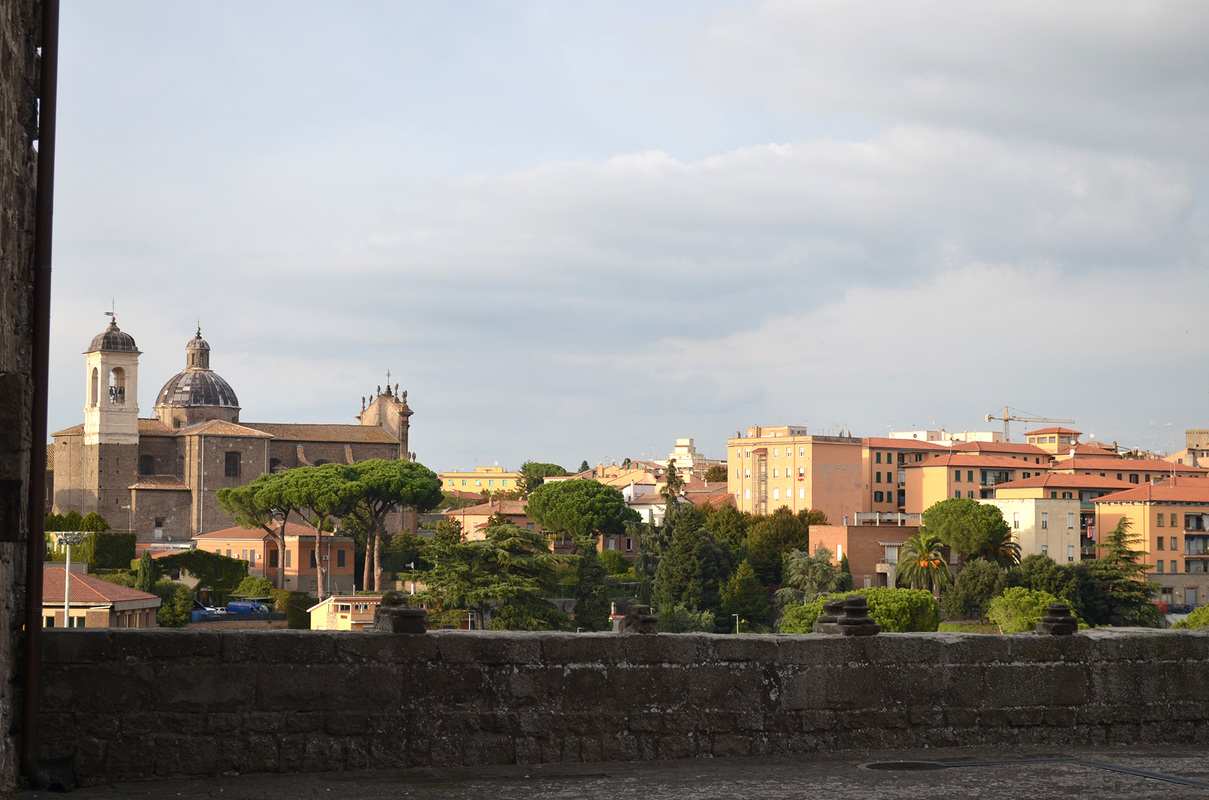
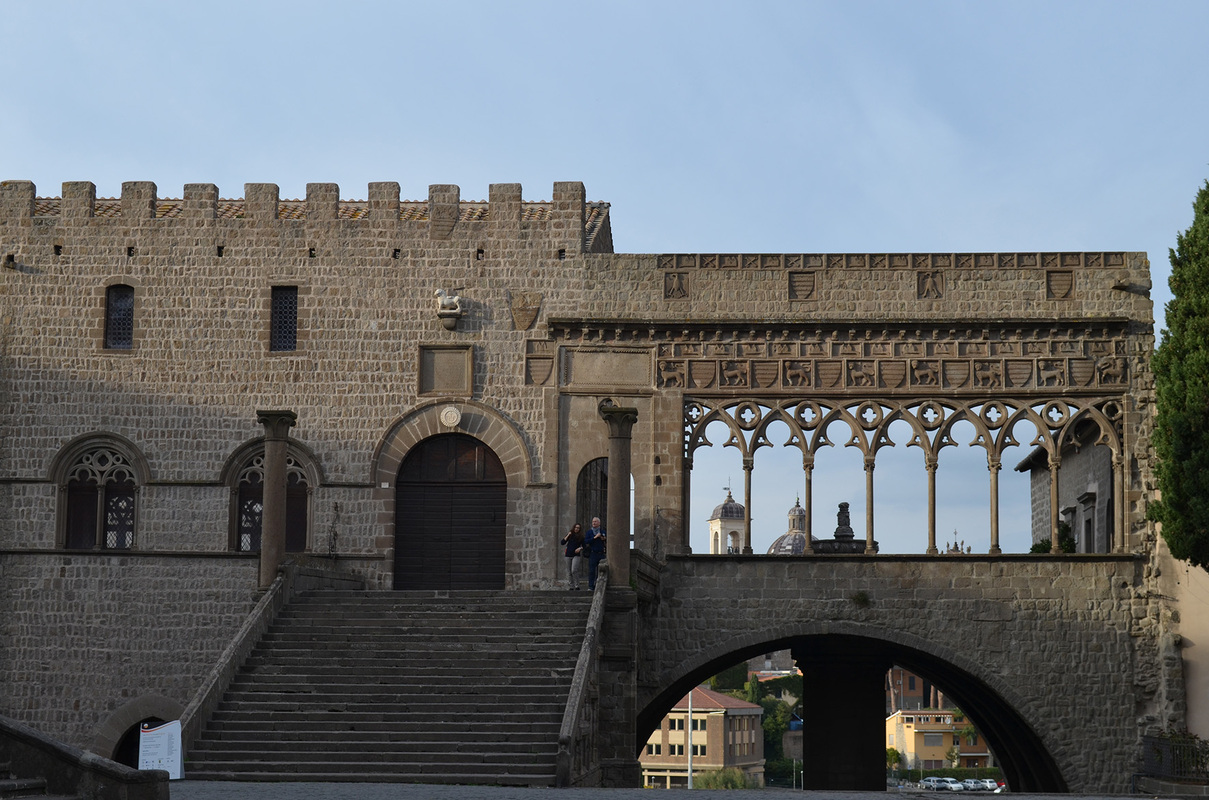
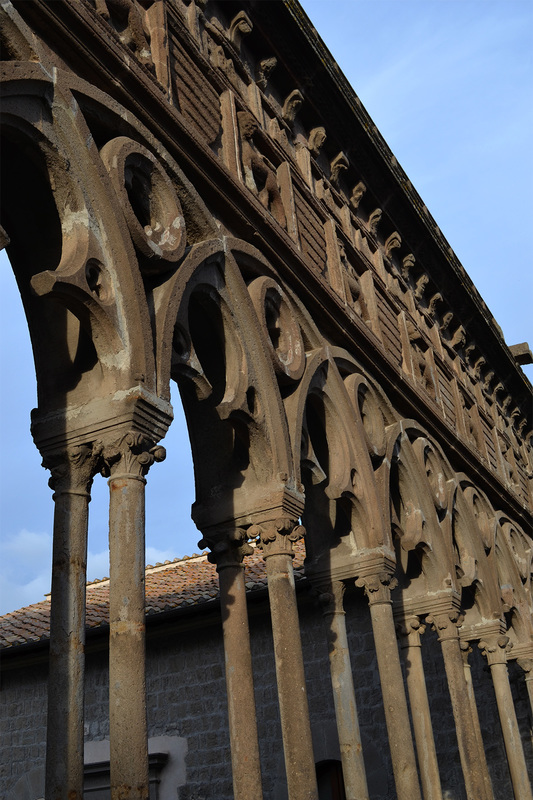
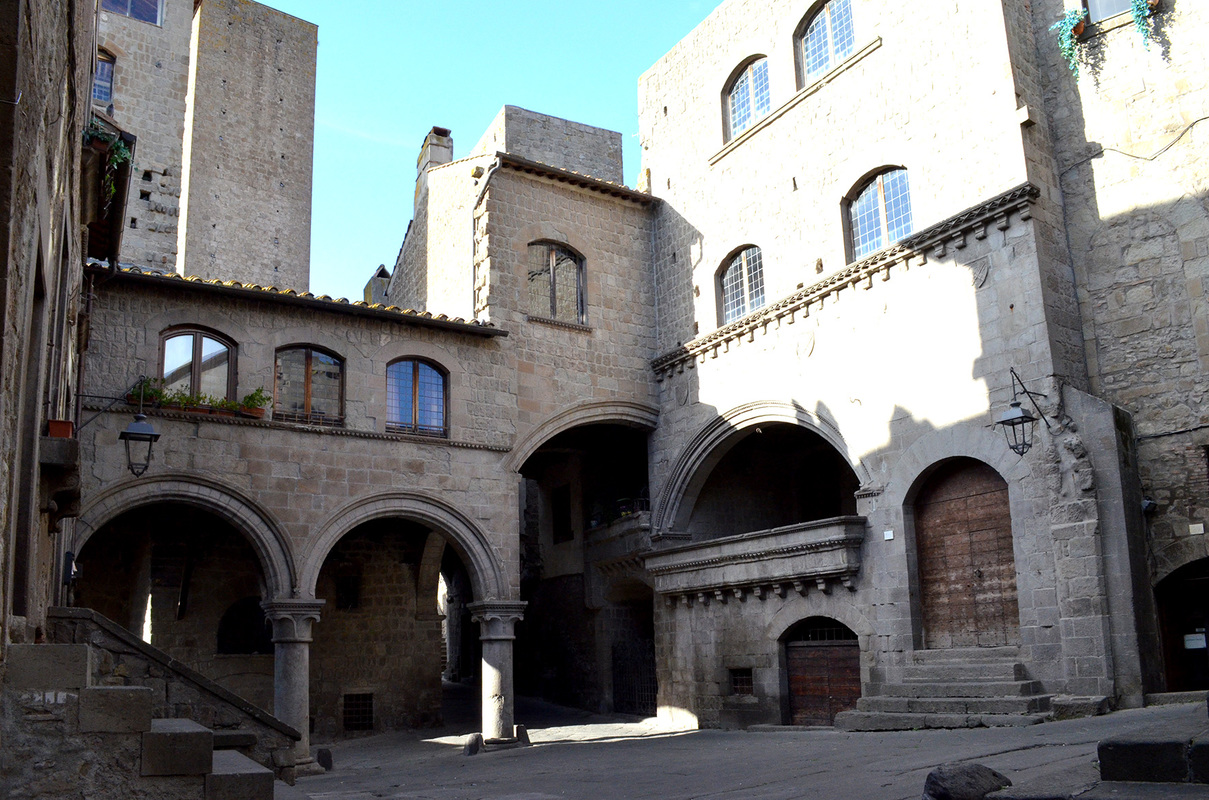
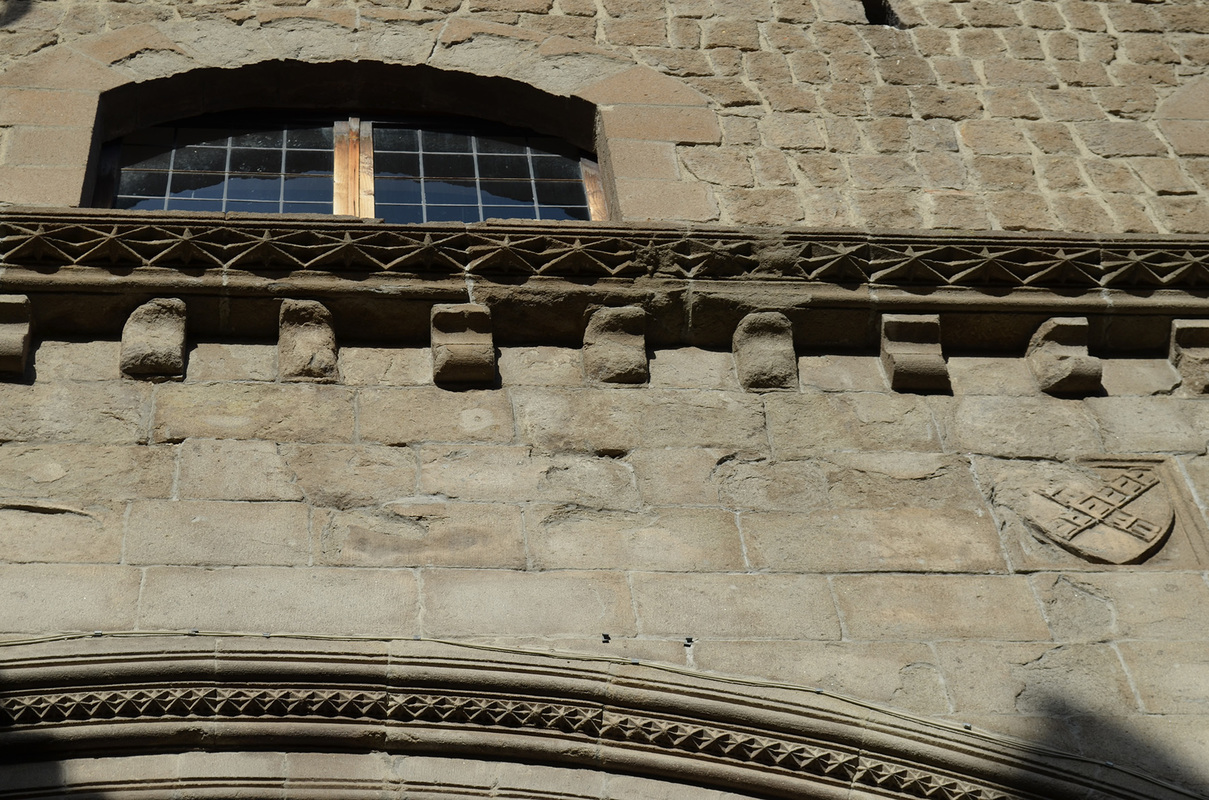
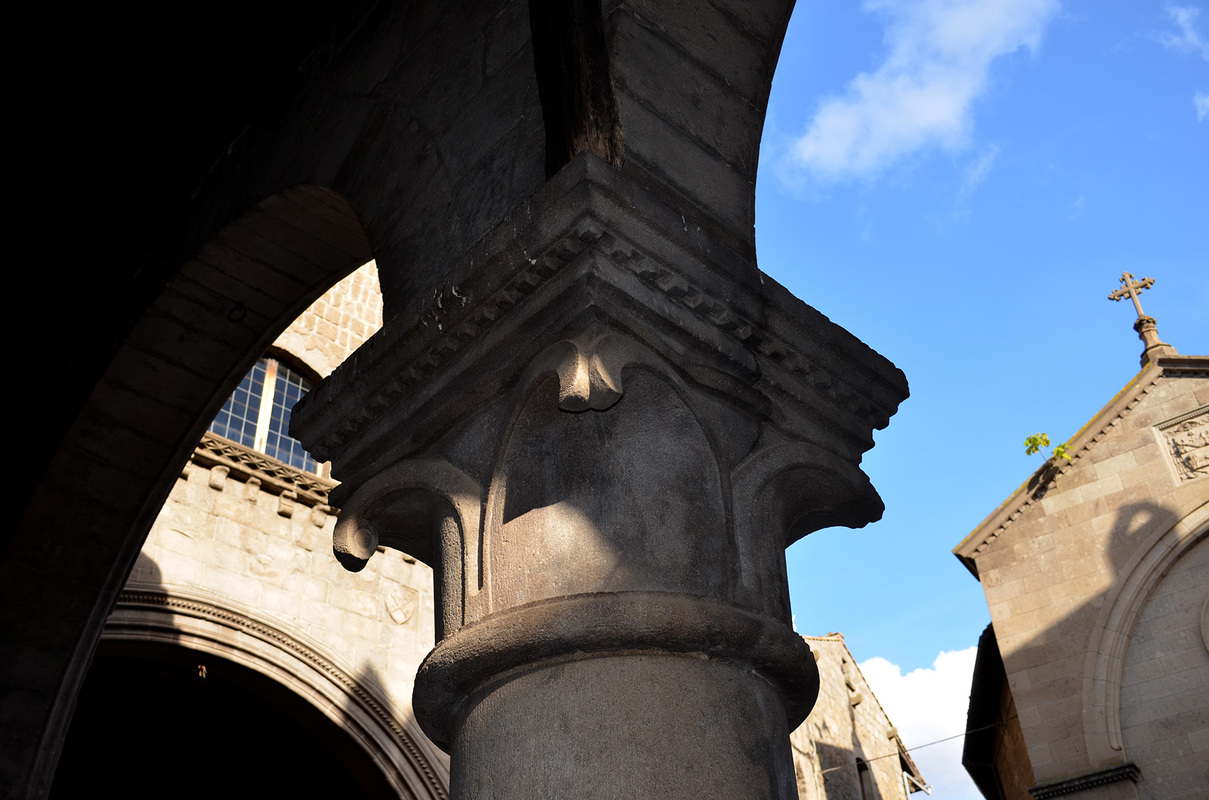
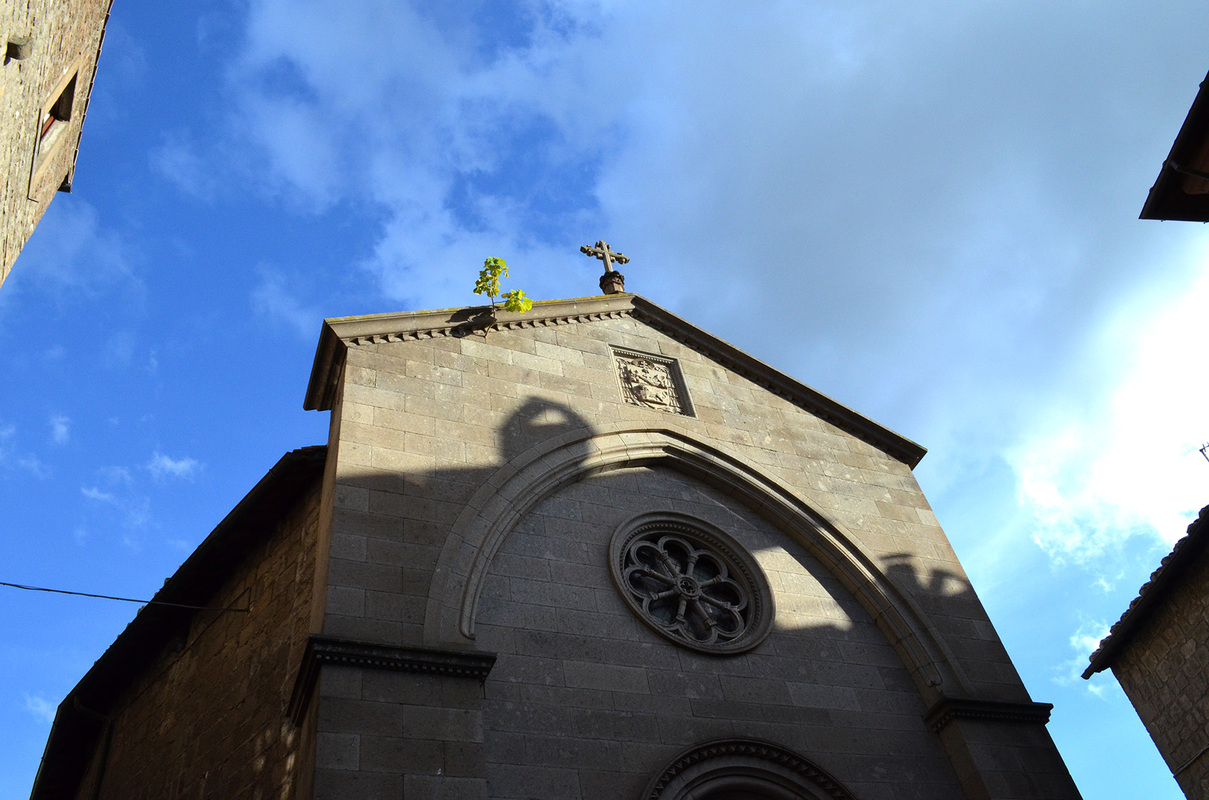
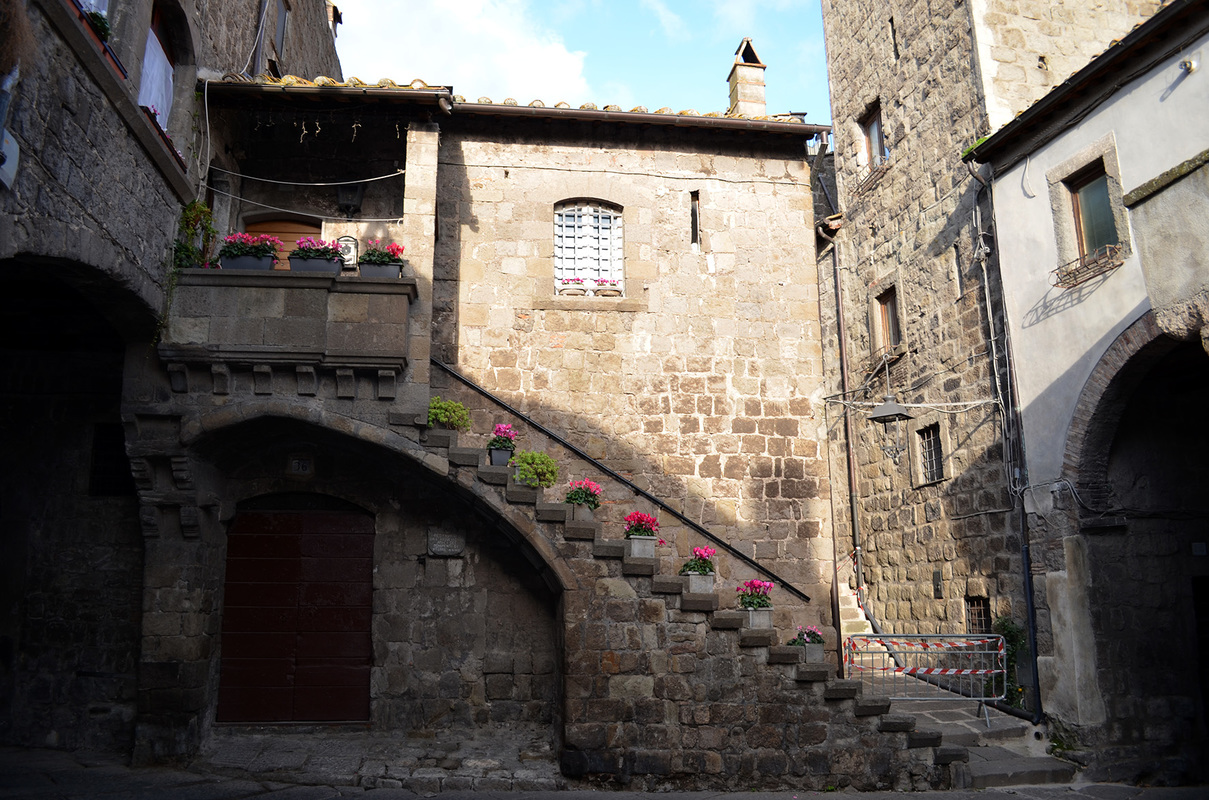
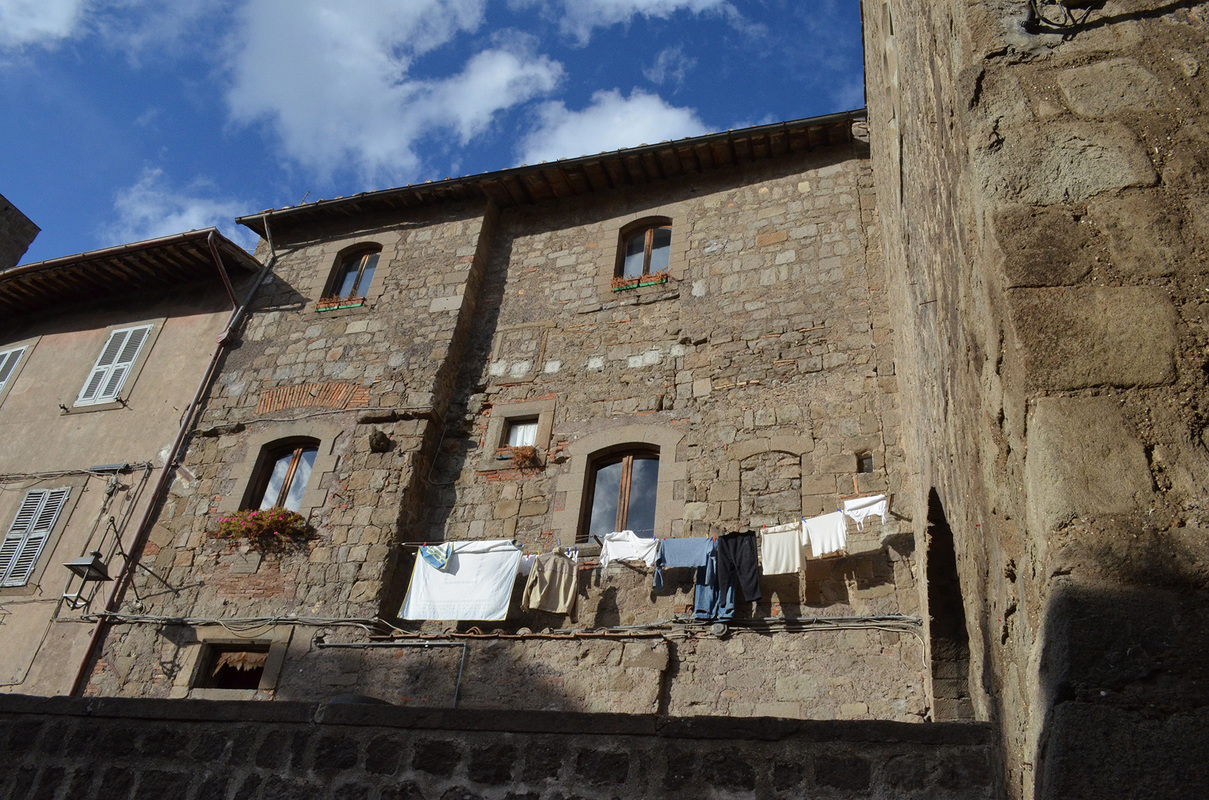
20.10. Fancy day in Caprarola!
Stefanias 4th course students had a twohour written translation test of Latin, in which they concentrated with thick dictionaries. Students had possibilities to negotiate with their teacher if any questions had arised.
Then I had a moment just to wonder this medieval town´s changes, as in J. R. Rowling's Harry Potter. In this kind of city she must have written her books! While restaurants and tavernas close their doors, you may not even find its location, there isn´t any visible signs of them, but when the places opened again, paved streets changed suddenly to a common public space, tables and chairs spread out on the streets and light bulbs are glowing their mysterious light. It would be great to see how the city is transformed into a stage of S. Rosa Macchina parade or the summer flower celebration of San Pellegrino.
The following lessons were literature for 5th classes, subjects were Verga, Rosso and Matielo Carusi – and then English for 3rd classes.
Stefania and Vittorio took me by car 24 kilometers from Viterbo through vulcanic eruption generated Lago di Vico to Caprarola and Villa Farnese, which was for me a magnificent experience!
Villa Farnese was initially built as a fortress palace by cardinal Alessandro Farnese and architect Antonio da Sangallo. Renaissance villa or mansion, Villa Farnese consists of pentagonal castle, with some fake windows on the facades and some fake perspekctivs inside. Double-columns framed staircase leads upstairs to the three-layered built Villa. Everywhere there are historical, and some decorative just for fun, wall- and roofpaintings.
Extensive cavernous baroque park includes for example a water source motif, which is believed to have been as a background for Leonardo da Vinci´s ”Madonna in Cave”, and the colours of Caprarolas scenery are seen in Leonardos chiaroschuro / sfumato.
The park areas continu into the hillside as nature park, as water park and as the labyrinth and park sculpture park with deities and eventually ending up with a rather small hunting castle, the courtyard and the hill with extensive horizons. Time passed quickly accompanied by the best possible guides, architect and archaeologist. Ancient mythology and humanity´s views of the world in Villa Farnese, blending a centuries-old history has remained in its thousands paintings thanks to huge restorations.
Our travel didn´t stop yet there -we visited also Caprarolas baroque church and S. Maria della Querce, designed by Giuliano da Sangallo in 1600s, in Viterbo. There are still preserved glazed terracotta relifs by Andrea della Robbia.
Stefania served me in her home for dinner her delicious homemade chickpea-rosemary-chestnut -soup with oliveoil and toasted bread with parma ham and pomegranate! Grazie tante mila!








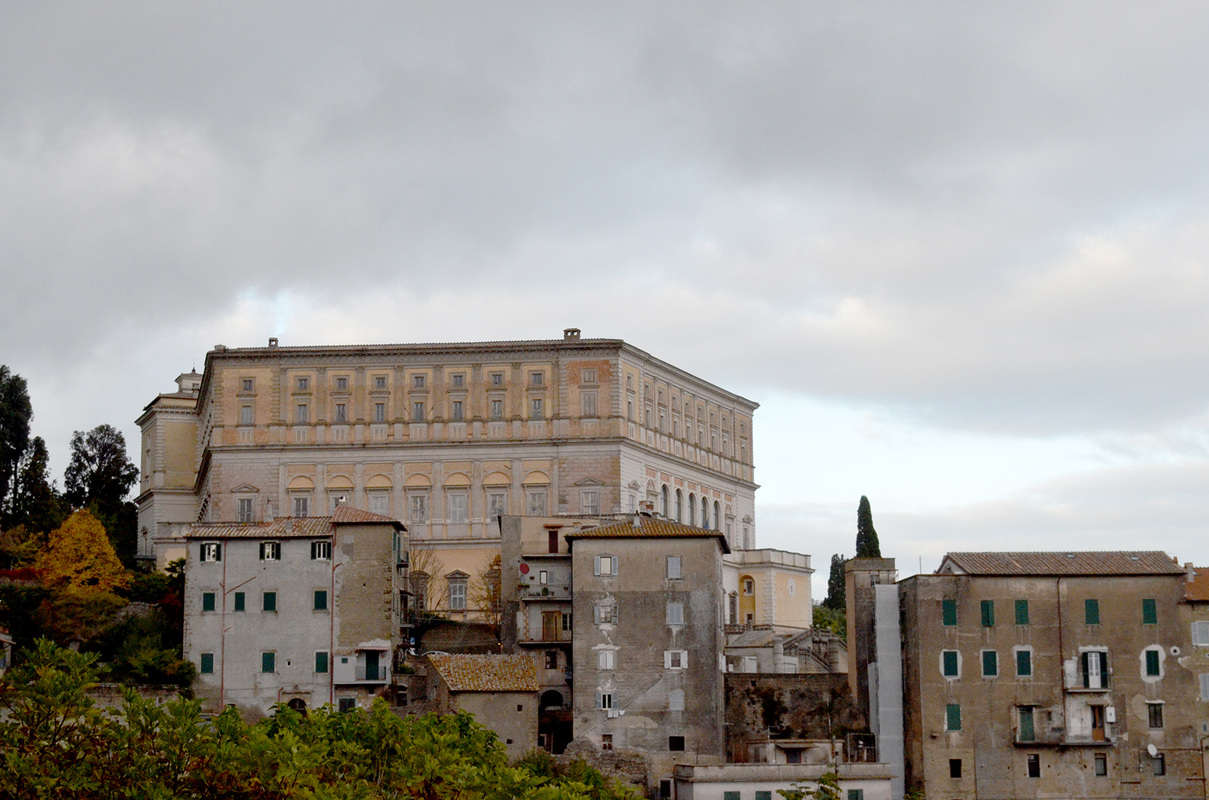




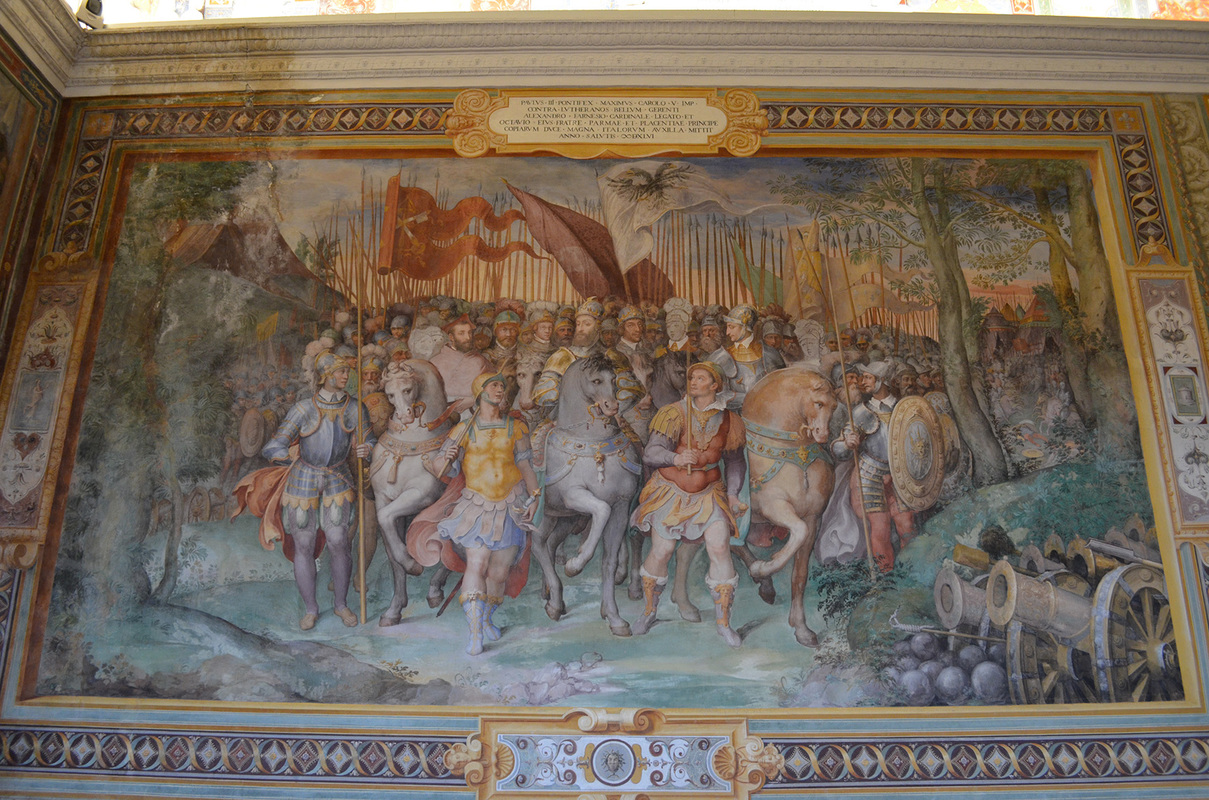
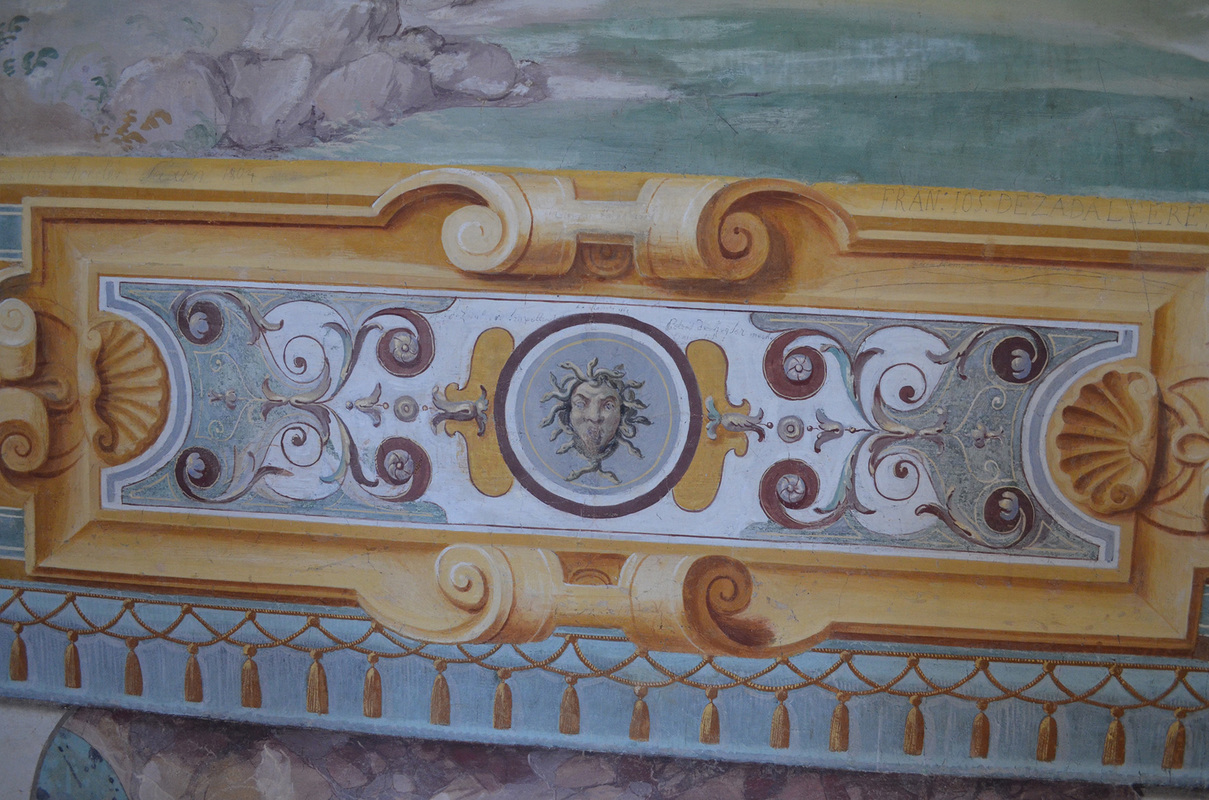
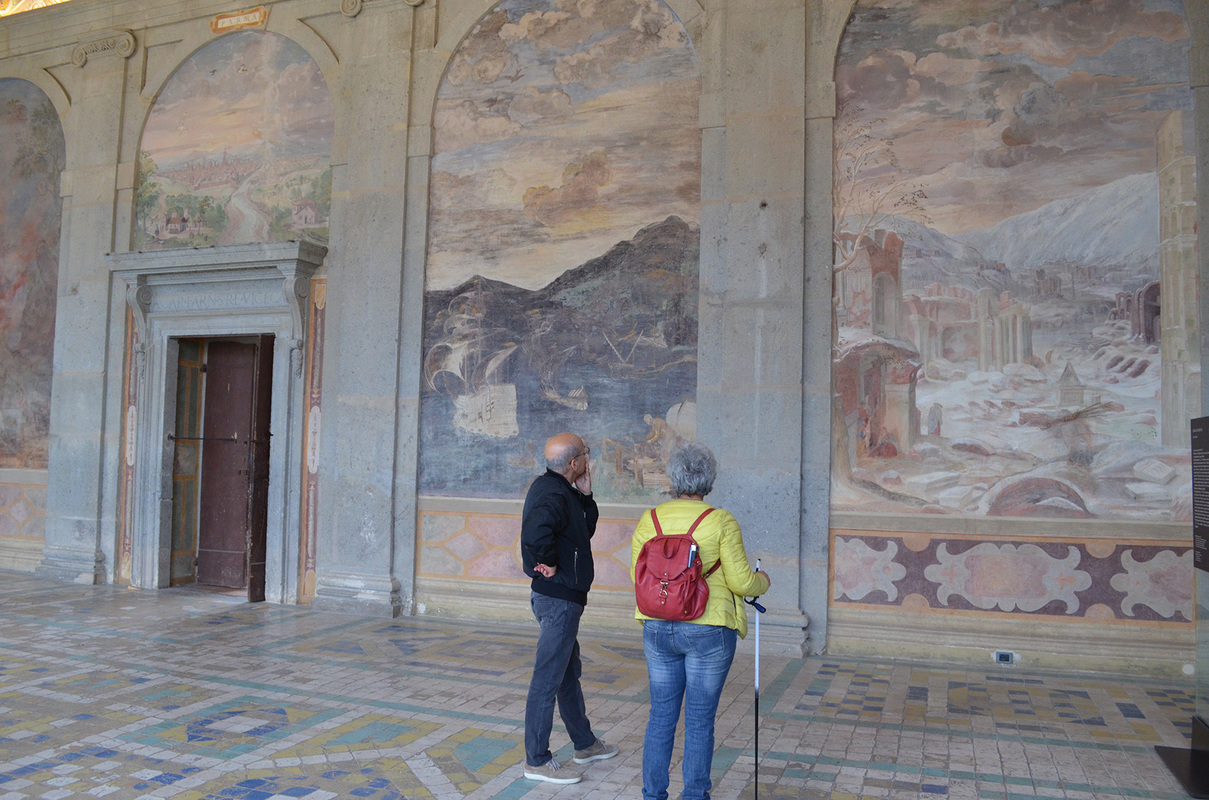
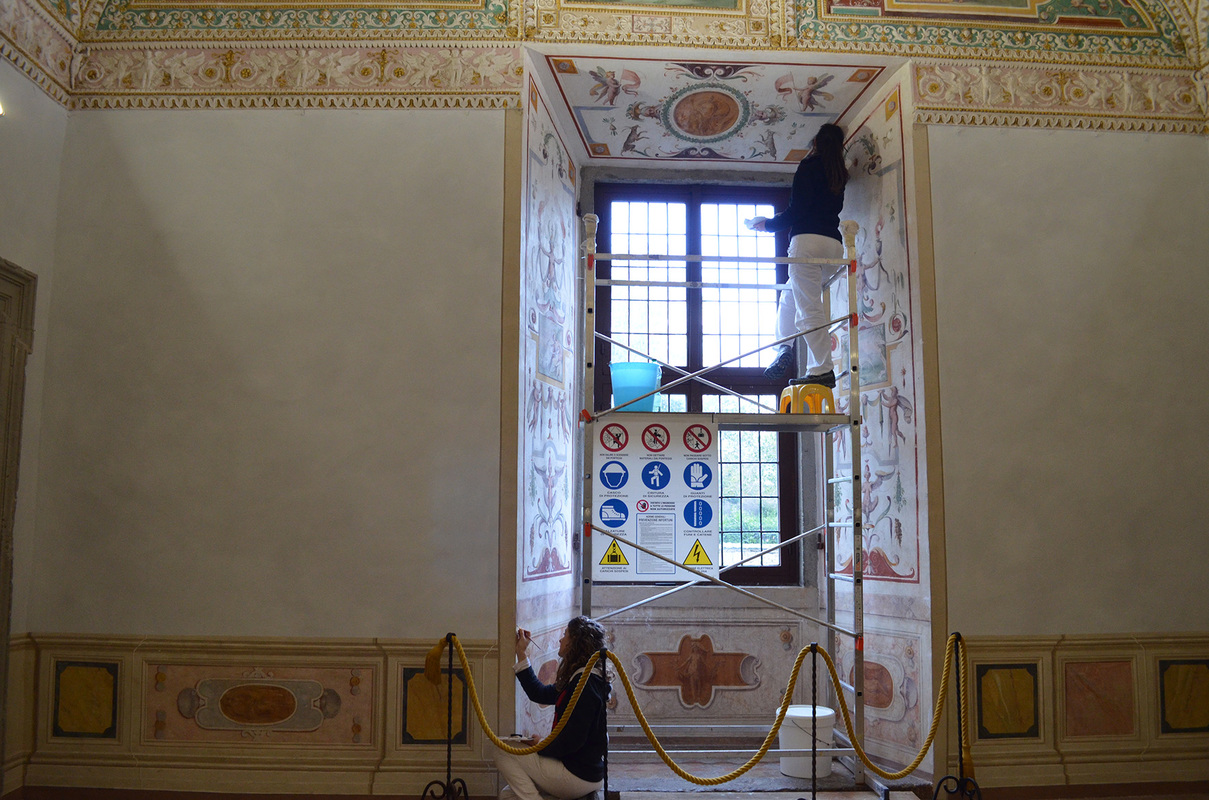






21.10. Time passed too quickly…
Stefanias literature lecture for 5th classes continued. Students' overlapping lectures also caused a debate in class, once again.
After that I had Vittorios two 4th classes exams in art history and professor Angelos history lesson; European military history and something about Maria Teresia in Italian language - they were my last job shadow lectures.
One student wanted to show me his father's paintings, which he had photographed. It was great that he could bring them in the last hour and before I left Mariano Buratti, because on Friday announced to start "sciopero generale”, threatened transport strike and my possibilities to return to the airport with train.
But everything went well! I had bought a ticket a day before, the train arrived on time to Porta Romana - and to Roma Fiumicino, and the flight to Helsinki ended on Saturday 22.10. On the way to the Central Finland it began to snow!
My Job Shadowing -journey completed one and a half years after the start of the project, due to my own schedule and holiday periods in Italy and Finland. The final arrangements for the trip went incredibly well at short notice, and I'm really happy because everything went in the best possible way! Thousands of thanks to everyone, and especially Chiara, Clara, Stefania, Vittorio, Tizian and Angelo! All the people I have met were delightful, students were wonderful nice, La Fontain was located in a beautiful old heart of the city and close to everything – Lyceum Mariano Buratti, San Pellegrino and other historical sites. I have also photographed quite a lot.
A week is a short time to explore places where the history of centuries of construction can still be seen everywhere. It's great to see, how culture and art history are living as a part of cultural heritage for young people also.
I think we have now a lot in common to remember with students in Joutsa, because they also visited Viterbo this autumn in connection with NZEP -project. Such a lovely place!



